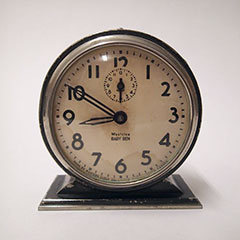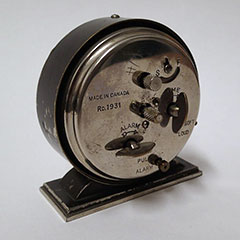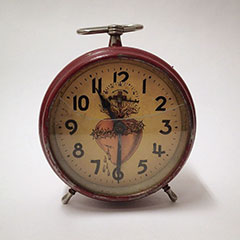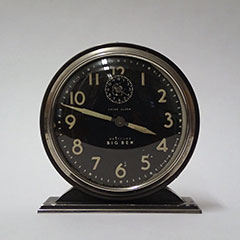The Early Bird Catches the Worm
The alarm clock’s ring replaced the rooster’s crow at the dawn of the Industrial Revolution, in the late 19th century. Workers used the invention to make sure they were on time for their shift at the factory, while farmers relied on the sunrise. The first modern alarm clock was invented in 1847 by Antoine Redier, a clockmaker. It was mass produced as early as the 1860s, with a wooden case and Roman numerals on its face, without any protective glass.
That being said, other mechanical systems already existed that allowed the setting of an alarm. As early as 250 B.C., the Ancient Greeks used a water-operated clock: when all the water accumulated in the reservoir, a mechanical bird activated an alarm.
Nowadays, alarm clocks are extremely diversified. They allow the sleeper to choose among an array of tones, to listen to music or to the radio, and to program all sorts of features. Recent models even offer dawn simulators. Instead of a buzzer, they are equipped with a light that intensifies gradually, mimicking the appearance of the sunrise.
Alarm clock ringing
Download audio (32 seconds, 1.24 MB)
Evolution of sounds to wake up to, from the rooster’s cry to the beeping of an alarm, including the cuckoo clock and the standard ringing of an alarm clock.
Author: Pierre Brouillette Hamelin





